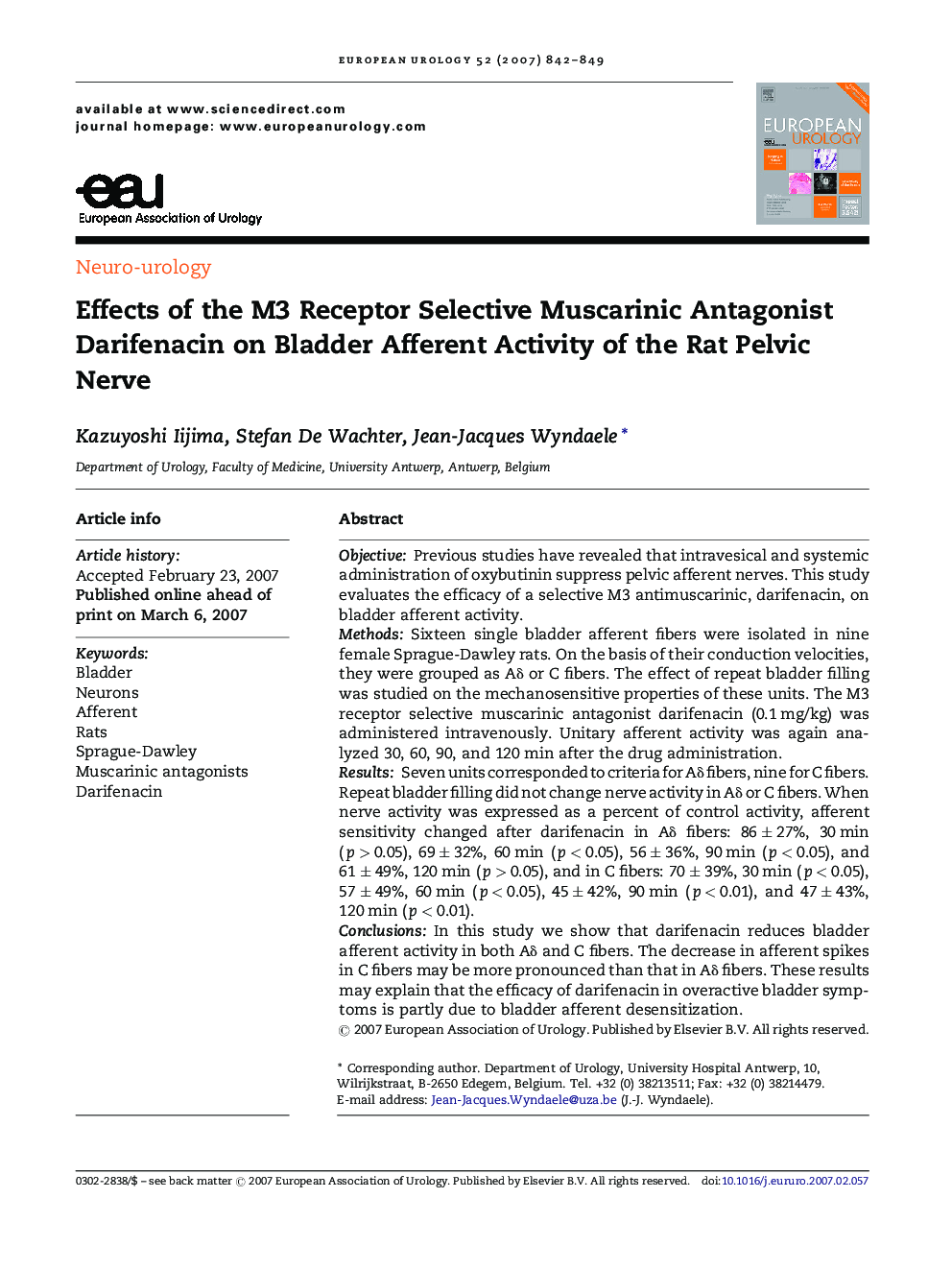| Article ID | Journal | Published Year | Pages | File Type |
|---|---|---|---|---|
| 3926084 | European Urology | 2007 | 8 Pages |
ObjectivePrevious studies have revealed that intravesical and systemic administration of oxybutinin suppress pelvic afferent nerves. This study evaluates the efficacy of a selective M3 antimuscarinic, darifenacin, on bladder afferent activity.MethodsSixteen single bladder afferent fibers were isolated in nine female Sprague-Dawley rats. On the basis of their conduction velocities, they were grouped as Aδ or C fibers. The effect of repeat bladder filling was studied on the mechanosensitive properties of these units. The M3 receptor selective muscarinic antagonist darifenacin (0.1 mg/kg) was administered intravenously. Unitary afferent activity was again analyzed 30, 60, 90, and 120 min after the drug administration.ResultsSeven units corresponded to criteria for Aδ fibers, nine for C fibers. Repeat bladder filling did not change nerve activity in Aδ or C fibers. When nerve activity was expressed as a percent of control activity, afferent sensitivity changed after darifenacin in Aδ fibers: 86 ± 27%, 30 min (p > 0.05), 69 ± 32%, 60 min (p < 0.05), 56 ± 36%, 90 min (p < 0.05), and 61 ± 49%, 120 min (p > 0.05), and in C fibers: 70 ± 39%, 30 min (p < 0.05), 57 ± 49%, 60 min (p < 0.05), 45 ± 42%, 90 min (p < 0.01), and 47 ± 43%, 120 min (p < 0.01).ConclusionsIn this study we show that darifenacin reduces bladder afferent activity in both Aδ and C fibers. The decrease in afferent spikes in C fibers may be more pronounced than that in Aδ fibers. These results may explain that the efficacy of darifenacin in overactive bladder symptoms is partly due to bladder afferent desensitization.
